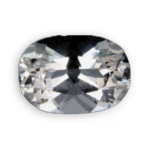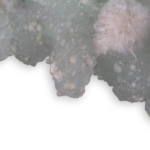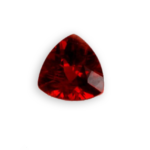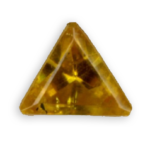
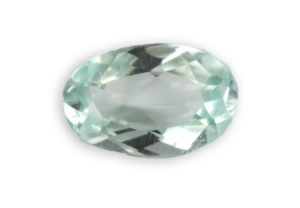
amblygonite
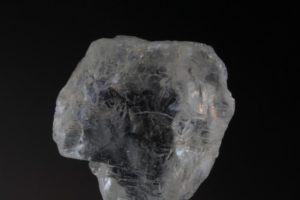
amblygonite crystal from Brazil
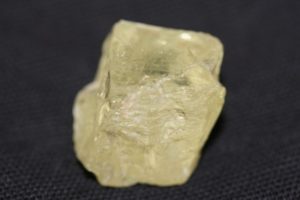
yellow amblygonite crystal from Brazil

yellow amblygonite crystal from Brazil
Detailed sheet
amblygonite
The German mineralogist Breithaupt described and identified it in 1817.
Its name comes from the angle formed at its cleavage, in Greek “Amblus” meaning “obtuse” and “Gonia” which means “angle”, as opposed to scapolite with which it was often confused.
It forms a continuous series with the montebrasite between a fluorinated pole and an hydroxylated one , the refractive index and birefringence increases from the fluorinated pole (amblygonite) to the hydroxylated pole (montebrasite).
The majority of gems called “amblygonite” are chemically closer to the “ montebrasite “.

CHEMICAL CHARACTERISTICS
(Li,Al) [PO4] F
alkaline phosphate of aluminum

PHYSICAL CHARACTERISTICS
Main color
yellow
Other colors
blue, colourless, mauve, green, purple
Color of streak
white
Luster
greasy, vitreous
Hardness
5.5 to 6.0
Density
3.00 to 3.10
Cleavage
perfect
Fracture
uneven
pearly on the cleavage

OPTICAL PROPERTIES
Transparency
transparent
very rarely found in transparent variety
Refractive index
1.580 - 1.615
Double refraction
0.018
definite, biaxial (+/-)
visible double refraction
Yes
Dispersion
0.014(0.008)
Pleochroism
absent
Number of colors
1
almost impossible to notice
Fluorescence
very weak
sometimes traces of pale green fluorescence
Inclusions
negative crystals with or without gas bubbles

CRYSTALS PROPERTIES
prismatic up to 5 cm, but often in aggregates
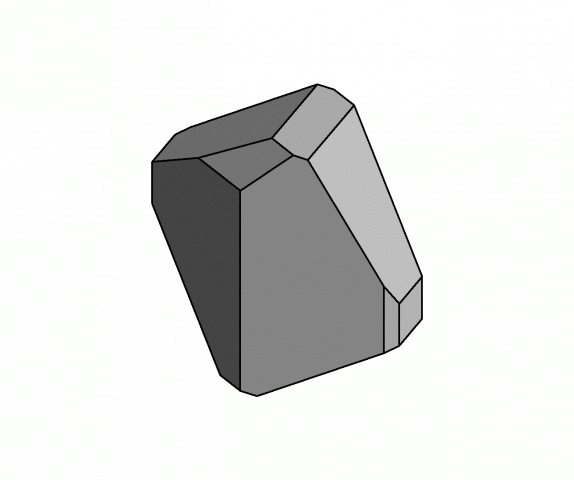
crystals system
triclinic

OTHER INFORMATIONS
Astrological sign
Leo, Sagittarius, Scorpio

APPROACHING GEMS
Exploited
sites
It has been found in France at Montebras in the Creuse region, in Mas-Barbu in the Haute Vienne, in Echassieres in the Allier, nowadays it’s found in Mogok in Burma, in Brazil (Minas Gerais, Sao Paulo), the United States States (California), Sweden (Varuträsk) and Namibia ( in its lilac variety).
use in jewelry
Rarely used in jewelry because of its easy cleavage that makes it fragile. When cut, it is with many facets and both the cutting and polishing are delicate.
Daily care
and precautions
It is fragile, it is a stone for collection.
imitations and
treatments
To date no synthesis.
It can undergo radiation treatments and then it takes a green, green-lemon yellow or blue tint. The color is stable in the light but disappears if the stone is heated.
The irradiated amblygonites are pink in Chelsea filter.
Historical
healing properties
It would have, in the yellow variety, the same properties as the orthoclase in the area that would encourage creativity, and would have a beneficial role in digestion and elimination of toxins.
It would promote the commitments in projects for humanistic purpose, great humanitarian causes and religious ones, it would help to understand others and improve the understanding of the pedagogical relationships, particularly in the children’s education field.
historical stones
and related legends
The Smithsonian Institution in Washington maintains the largest Brazilian cut amblygonite, some of whom excess the 50 carats, a rarity for this stone whose crystals are never very large.
Venez visitez
notre site web
voillot-joaillier.fr
Lorem ipsum dolor sit amet, consectetur adipiscing elit. Ut elit tellus, luctus nec ullamcorper mattis, pulvinar dapibus leo.Lorem ipsum dolor sit amet, consectetur adipiscing elit. Ut elit tellus, luctus nec ullamcorper mattis, pulvinar dapibus leo consectetur adipiscing elit. Ut elit tellus, luctus nec.

